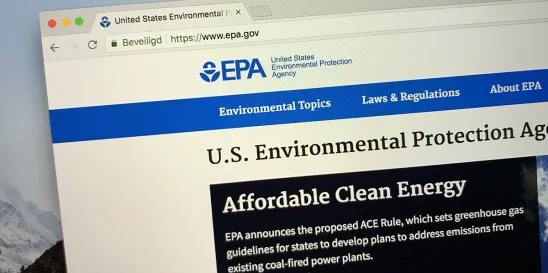On Jan. 17, the Environmental Protection Agency (EPA) issued guidance that, for the first time in 30 years, lowers recommended screening levels and strengthens guidance for investigating and cleaning up lead-contaminated soil in residential areas. The EPA’s Updated Soil Lead Guidance for CERCLA Sites and RCRA Corrective Action Facilities was developed as part of the EPA’s 2022 Strategy to Reduce Lead Exposures and Disparities in U.S. Communities.
The guidance goes into effect immediately, and the new residential lead standards apply to both open and closed Resource Conservation and Recovery Act (RCRA) and Comprehensive Environmental Response, Compensation and Liability Act (CERCLA) sites.
The new residential screening levels (RSLs) reduce the levels of lead from 400 parts per million (ppm) by at least half and, in some instances, 75 percent. The EPA guidance says:
- EPA regions should use a residential soil lead RSL of 200 ppm
- EPA regions should use a RSL of 100 ppm if an additional source of lead is identified, such as lead water service lines, lead-based paint, and non-attainment areas where the air lead concentrations exceed National Ambient Air Quality Standards (NAAQS). The recommended RSL of 100 ppm considers aggregate lead exposure and increased risk to children living in communities with multiple sources of lead contamination. In making site-specific decisions on when to use an RSL of 100 ppm, EPA regions may use national data sets identified by OLEM for this purpose. EPA regions may also use site-specific sources of information (e.g., data from the local health department or local public water system), alone or in combination with national data sets, to select an appropriate RSL of either 100 ppm or 200 ppm. EPA regions should document the site-specific rationale for the selected RSL.
- Federal-led RCRA corrective action residential soil lead cleanups should use an RSL of 200 ppm or 100 ppm, depending on the facts of the situation. The EPA strongly encourages states that are authorized for RCRA Corrective Action to use these RSLs in their state-led residential soil lead cleanups.
The agency notes that RCRA and CERCLA cleanup levels for final remediation of lead contaminated soils will be based on site-specific factors, including risk factors and community input that can vary from site to site. However, where removal actions are required under the authority of either statute to address imminent and substantial endangerment to human health or the environment, the guidance establishes a regional removal management level (RML) of 200 ppm – again, half the current 400 ppm default standard for lead in residential areas.
While the goal of protecting children from lead exposure is rightfully one of the EPA’s top priorities, the agency’s decision to apply the new guidance retroactively is problematic. It states, “This guidance should be considered for all residential lead sites subject to CERCLA response and RCRA Corrective Action authorities, including those previously addressed and/or deleted from the National Priorities List (NPL).” (Emphasis added.)
In short, closed RCRA and CERCLA sites are subject to being reopened for evaluation and further cleanup. The guidance suggests that under CERCLA, these evaluations can be done as part of the five-year review process, and under RCRA, post-remedy review authority allows the agency to reopen permits based on new information.
For those who have already been down this road for emerging contaminants (e.g., 1,4 dioxane and PFAS), reopening closed sites has been a practical and financial nightmare. There is little more unsettling in the environmental arena than having to contact a group of potentially responsible parties (PRPs) who understood they had resolved their CERCLA liability at a site (and who may have settled with their insurers based on that belief) and telling them they may be facing substantial additional response costs to conduct further investigation and remediation.
Some of the PRPs may be gone; those that are still around could have to reopen closed books and make new disclosures, and the PRP group’s original decades-old allocation may not apply to the contaminant giving rise to the reopening (and some of the PRPs may assert that they have no nexus to that contaminant). There also is a very real risk the agency will seek reopening for yet another contaminant in the future.
The prospect is equally daunting for a party that had received confirmation from the EPA that it had completed RCRA corrective action and now is served with notice that the perceived finality was fleeting.
These potential risks highlight the renewed importance of reopener provisions in administrative orders and consent decrees. While parties do not have the luxury of reforming reopener provisions in existing agreements with the EPA to conform to the evolving landscape, they do have the opportunity to take a fresh look at reopener provisions in new agreements going forward. Given the growing uncertainty about finality at CERCLA and RCRA sites, parties need to consider options for narrowing the scope of agency reopeners, particularly for the period immediately after the agency approves closure, for new information and unknown conditions.




 />i
/>i
